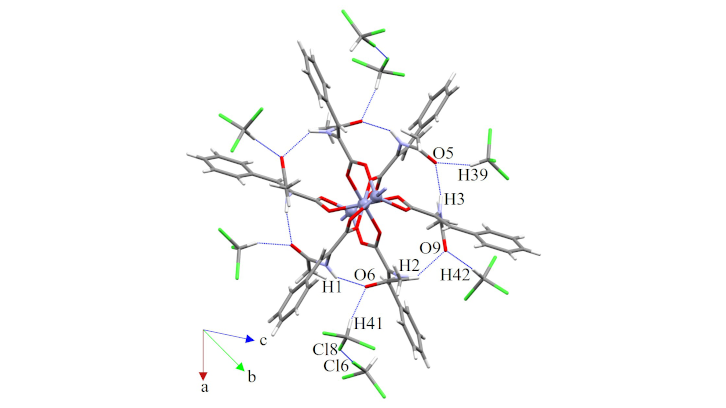Zinc-based coordination polymers allow the obtention of different structures

Coordination polymers are highly interesting compounds with a large variety of structures and multiple applications. Researchers from the Department of Chemistry have managed to characterize and analyze four zinc-based coordination polymers forming a variety of structures whose obtention depend on the temperature and/or the solvent used. These coordination polymers present diverse luminescent properties depending on their structures.
During the last decades, crystal engineering has arisen as an interdisciplinary field based on the rationalization of crystalline structures from their assemblies. In this field, coordination polymers (CPs) have attracted enormous interest not only for their structural diversity but also for their potential applications.
Small changes in the synthetic conditions, metal salt, metal:ligand ratio, temperature or solvents can lead to the of different CPs. The possible structural transformations triggered by external stimuli (solvent, light, heat, synergic effects) have attracted remarkable attention, paving the way for the obtention of new structures inaccessible through other synthetic methods.
The behavior of CPs against external stimuli has witnessed remarkable attention, especially when resulting CPs present reversible molecular arrays.
We have synthesized and characterized four Zn(II) CPs. The reaction between Zn(OAc)2 (OAc = acetate), α-acetamidocinnamic (HACA) and 4,4’-bipyridine (4,4’-bipy) yields {[Zn(ACA)2(4,4’-bipy)]·EtOH}n (1). This compound was used for the formation of three CPs, through dissolution-recrystallization structural transformations (DRSTs).
The study of four crystal structures revealed that their secondary building units (SBUs), monomeric, dimeric, and trimeric arrangements linked by 4,4’-bipy ligands. The obtention of one or another compound depend on the solvent and/or temperature. Furthermore, the reversibility and interconversion between the four CPs have been assayed and demonstrate that these transformations are reversible in most of the cases. Finally, their solid-state photoluminescence has been analyzed and evidenced that the effect of the amide moieties not only predetermine a different secondary building unit (SBUs), but also lead to a different emission in four compounds.
Therefore, this work contributes to the understanding of structure-property correlations in CPs and provide an example of how CPs consisting of the same former ligands with different molecular arrays present differences in their photoluminescence properties.
Department of Chemistry
Universitat Autònoma de Barcelona
References
Daniel Ejarque, Teresa Calvet, Mercè Font-Bardía, Josefina Pons, Amide-Driven Secondary Building Unit Structural Transformations between Zn(II) Coordination Polymers, Cryst Growth Des, 2022, 22, 5012-5026, DOI: doi.org/10-1021/acs.cgd.2c00520
Desiraju, G.R. J. Am. Chem. Soc. 2013, 135, 9952-9967
Ejarque, D.; Calvet, T.; Font-Bardía, M.; Pons, J. Molecules 2020, 25, 3615
Cheng, A. -L; Ma, Y.; Sun, Q.; Gao, E. -Q, CrystEngComm 2011, 13, 2721
Cepeda, J.; Pérez- Yáñez, S.; García, J. A.; Rojas, S.; Rodríguez-Diéguez, A. Dalton Trans. 2021, 50, 9269-9282


